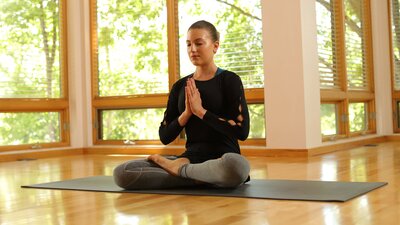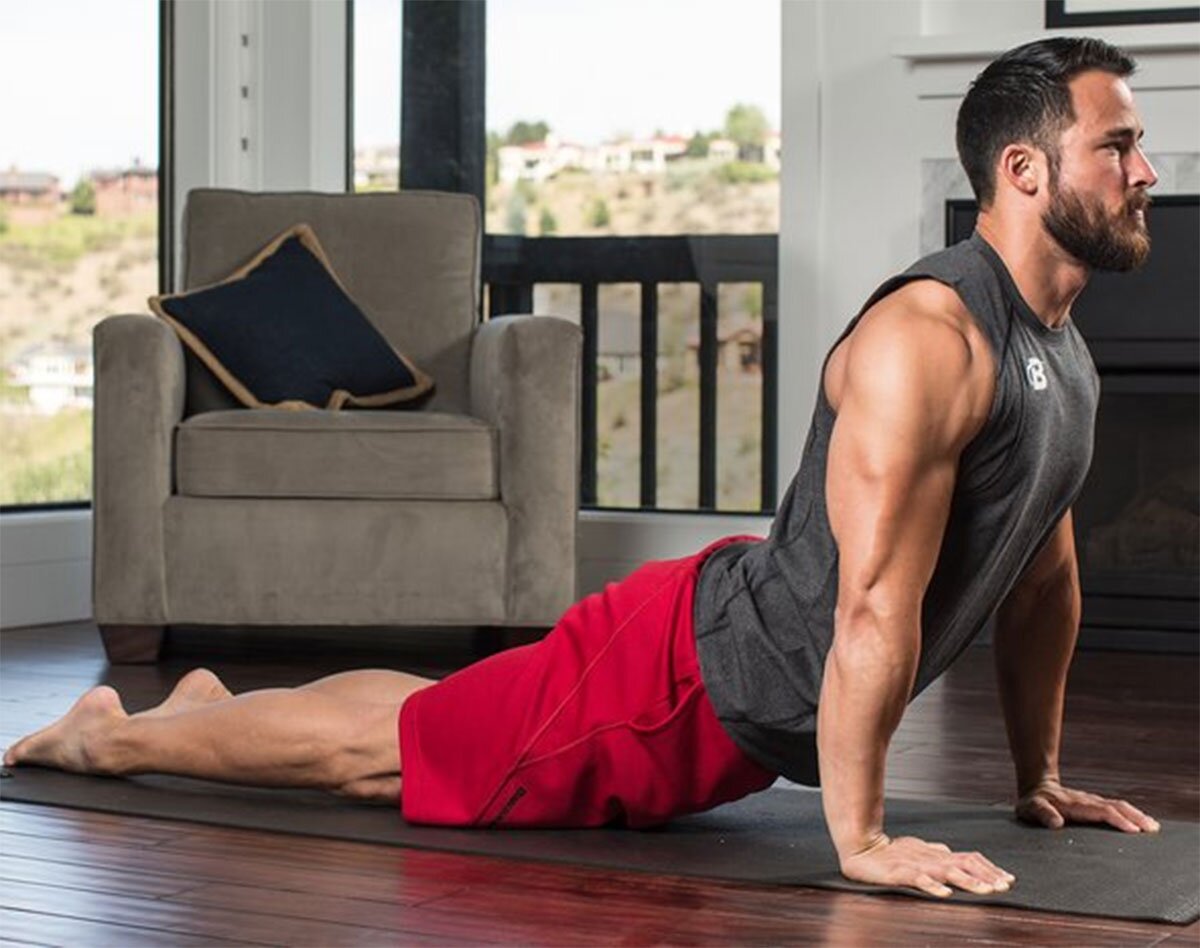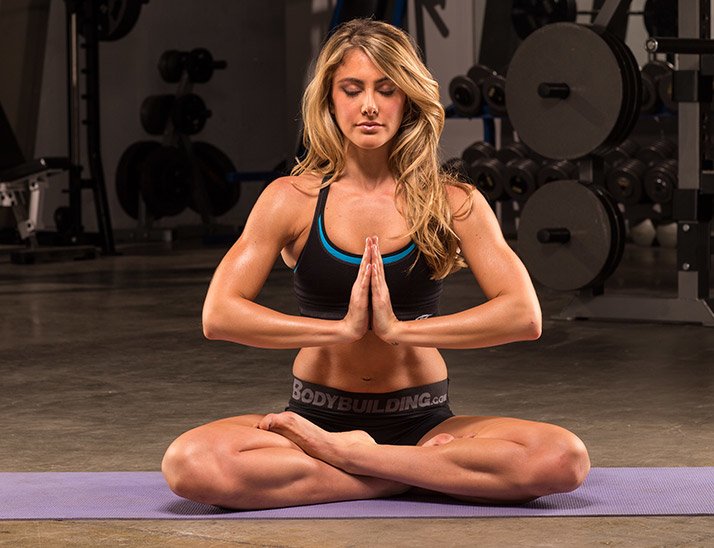
The Athlete's Guide To Breathing Meditation
Athletes and coaches swear by meditation as a way to build focus and willpower. But where do you begin? Right here, with this simple guide.
While living in Thailand for 8 months, I attended a vipassana meditation retreat. Picture 10 days in complete silence, for 10 hours a day. I slept on a cement bed, woke at 4 a.m., spent much of the day sitting in the same posture, and was sore, tired, and bored plenty of the time. And yet if you ask me, I'll say right away that it was a totally awesome experience!
Like any other athlete, I like to challenge myself. I want to push my boundaries and learn more about myself each day and each session. This is what training does—and it's also what meditation does. It strengthens our minds, pushing us to do more and be more. A growing amount of research also indicates it can have powerful positive effects on our bodies, and you'll find strength athletes of all types who swear by it.
The best part? You don't need to go to Thailand to experience its benefits. It's totally free, you can start right now, and you don't need much coaching to start.
The Importance of Breathing
If you use pop culture as your guide, it could be easy to believe that you have to "meditate on" something—some profound truth or mantra. It doesn't have to be that way. In fact, I would argue that you should start simply by paying closer attention to something that you already do tens of thousands of times a day: breathing. If it helps you get over the "that's weird" hump, you can just think about meditation as deep-breathing practice.
Sure, you know that breathing is crucial to survival, since it's responsible for the delivery of oxygen and the removal of carbon dioxide to and from the lungs and tissues. But here's what you may not know: Not all breathing is the same. Shallow, chest-focused breathing is an entirely different animal than deep, belly-focused breathing, also known as "diaphragmatic breathing." The former can increase or prolong a stressful state of mind and body. The latter can do incredible things.

For one, breathing can also produce a sense of calm, engaging our parasympathetic nervous system in what Harvard researcher Herbert Benson famously called "the relaxation response." Studies have also shown it can help alleviate adrenal fatigue, lower cortisol levels, and help control pain in a variety of populations.
Mindful meditation has also been shown to be effective at decreasing food cravings and binge-eating. Trainers and strength coaches advocate it as a way to boost willpower before training, but also as a way to activate the deep core as part of a warm-up. And as a more sport-specific benefit, researchers have found that engaging in respiratory-muscle training can improve exercise performance.
In other words, a breath-focused meditation isn't woo-woo in the least. In fact, it may be one of the easiest ways you can improve the way you feel and perform, both in the gym and in life.
Where, When, and How to Start With Breathing Meditation
Got a hunk of floor? Do it there. Got a bit of time? Do it then. Just 10 minutes a day is all you need. More is better, of course, but 10 is a great start.
As for the "how," you probably envision the classic lotus posture: seated on the floor, cross-legged, straight back, eyes closed, hands on your knees with your thumbs and index fingers touching, blissfully unaware of your surroundings.
This posture works for plenty of people. For many others, it's awkward and uncomfortable. If that sounds like you, then find a position that's not awkward and uncomfortable. Some people find they can best access the "clear mind" feeling in a chair, lying down, standing, running, chanting, or even doing yoga.
Personally, I find that some variety of seated breathing meditation is a great place to start. Here's how you can optimize the seated position to encourage full, deep, and expansive breaths:
- Spine: feeling tall and following the natural double S curve
- Head: pointing straight forward with a slight double chin for alignment—again, think tall.
- Eyes: closed, but relaxed, not clenched
- Shoulders: down and away from the ears
- Body: relaxed, but not enough to fall asleep
If you're going to sit on the floor, placing a yoga block or a couple of phone books under your butt can make your hips far more comfortable. If you're in a chair, just focus on not slouching or collapsing. I'll say it one more time: Stay tall, but relaxed.
What to Think About While Meditating
This is the big question, right? Get "in there," and you might find yourself bombarded with thoughts, emotions, sensations, and urges—an itchy cheek here, a twitchy arm there, and dammit, what the hell is that sound?
The stock answer: Meditation is less about a lack of thinking and more about awareness. You can't eliminate your senses, so try to observe them objectively. An analogy I like is hearing versus listening. When I lived in South America, I could hear people speaking Spanish, but I couldn't understand what they were saying. They were there, and I was aware of them, but I was simply observing rather than actively processing their words.
Awareness is really the key word here. Be aware of thoughts that pass in and out of your mind without analyzing, critiquing, judging, or trying to make sense of them. Instead, place your awareness on your breathing.
Inhale with your belly for a count of five, and then exhale with your belly for a count of five. You can go so far as to think, "Inhaling two three four five, exhaling two three four five." Do whatever makes it work for you. Continue counting, and your breath will quickly get in lockstep with the pattern. When you get distracted—and you will— gently guide yourself back to your breath.
Everyone who meditates gets distracted. It happens! But here's the thing: Each time you pull away and then pull back, you're building willpower. So keep trying, and trust that you're doing good work.
The Best Times for Meditative Breathing
Once you get serious about your training—no matter what type if training it is—you quickly realize that the real benefits only come when you have a rock-solid routine. This is the case in lifting, running, yoga—you name it. Meditation is no different. Especially in the early going, the duration of your meditation sessions isn't nearly as important as the frequency.

I'll admit that my meditation practices have been on and off over the years. But the times when I am most consistent are when I build a structured routine with a stable environment. And when I'm struggling, I find that I'm able to get back into the swing by inserting small meditations into parts of my day where my parasympathetic nervous system seemed to be keyed up or on edge. These include:
- Before meals. Take at least 3 (and as many as 10) deep, slow, purposeful breaths.
- After a workout. Physical activity is a stressor to the body, so definitely do another 3-10 breaths here.
- Before bed. If you have trouble falling asleep, this could be just the thing to clear your mind of a day of busy thoughts. If it helps, play some soothing sounds.
- Before, after, and during a stressful event. Anxiety and pressure can overtake even the most prepared athlete. Practice your meditation to cultivate confidence, so you can access the relaxed state of mind when you need it most.
How to Make Meditative Breathing Work for You
A few breaths a few times a day take no time at all. Then, when you find the spot in your day that has the most space for a 10-minute routine, you'll be primed and ready to jump in. Just keep a few tips in mind:

- Be consistent. Try to be as regular as you can, especially at first. Do your 10-minute meditation in the same place, at the same time. Some apps allow you to set alarms or reminders so you don't miss your window.
- Start small. Ten minutes might feel like an eternity the first time, so don't feel like you need to progress beyond that number quickly. I recommend using a timer or app—there are plenty of them.
- Let go of expectations. Meditation is a personal exploration, so don't expect it to feel a certain way. One session may be easy, while the next on might be difficult. Don't judge yourself. Different challenges will arise, but it will get easier with consistent practice.
- Create your safe space. Once you feel like you've got the hang of it, find or create a space to do longer sittings. Get some comfortable pillows, or paint a room. Find a quiet and comfortable place where you won't be distracted.
- Keep counting your breaths. Yes, there are many ways to meditate. Guided meditation with apps is all the rage right now, for instance. But don't rush to get away from the basic five-count inhale-and-exhale model. It's simple, but also sufficient to sustain your practice for a long time.
The Practice of a Lifetime
We all know what it feels like to overthink something. You tried to do too much at once, or remember too many cues at once, and you failed. Maybe it was a missed lift, a missed opportunity in a competitive setting, or something else entirely. Many athletes find that adding a meditation practice into their life helps them avoid this situation and find clarity when they need it most: when they step up to the bar, onto the pitch, or into the ring. When others would be holding their breath, these athletes can breathe deep and stay pointed in the right direction.
Just remember, your practice is unique to you. Don't grow disenchanted because you don't think you're doing it right, or you're not seeing life-changing benefits. Whatever comes up in your mind is where you need to be. Trust that you're going good work for your health and performance, and stick with it!
